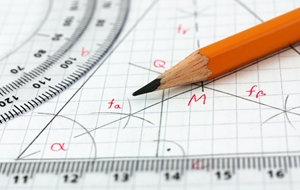Spatial awareness and math proficiency |
|||
 Many students and educators feel the Common Core State Standards are more rigorous than previous educational benchmarks, including those for math. In fact, the Common Core starts students off with geometry in kindergarten. They must use geometric ideas and vocabulary as they're introduced to addition and subtraction. While the geometry kindergartners tackle isn't a challenging set of formulas and theorems, they do learn about shapes. But why introduce a difficult topic to kids so young? Turns out, science backs up the Common Core's introduction of geometry in kindergarten. According to a study by the University of Michigan, training students in spatial awareness (a skill supported by geometry) helps them improve their understanding of math concepts. Math and spatial awareness What's more, researchers discovered that by improving spatial awareness, students can become better at math as a whole. Researchers had 6- to 8-year-olds complete a training session that worked on mental rotation (the ability to mentally rotate 2-D and 3-D objects). Students were given images of two halves of one whole. The halves were placed at odd angles, and students had to figure out how the shapes would look when put together. After the short 20-minute training session, researchers had students take an addition and subtraction quiz. Students who were given mental rotation training performed better than students who were not. Researchers noted that this kind of spatial work gets the mind ready to tackle patterns and calculations, which is why it's so effective at improving math skills. A quick fix in the classroom "What's shocking is that we saw these improvements in math performance after giving the students just one 20-minute training session in spatial ability," Kelly Mix, the study's co-author and a professor of educational psychology, said in a statement. "Imagine if the training had been 6 weeks." |

|
||
